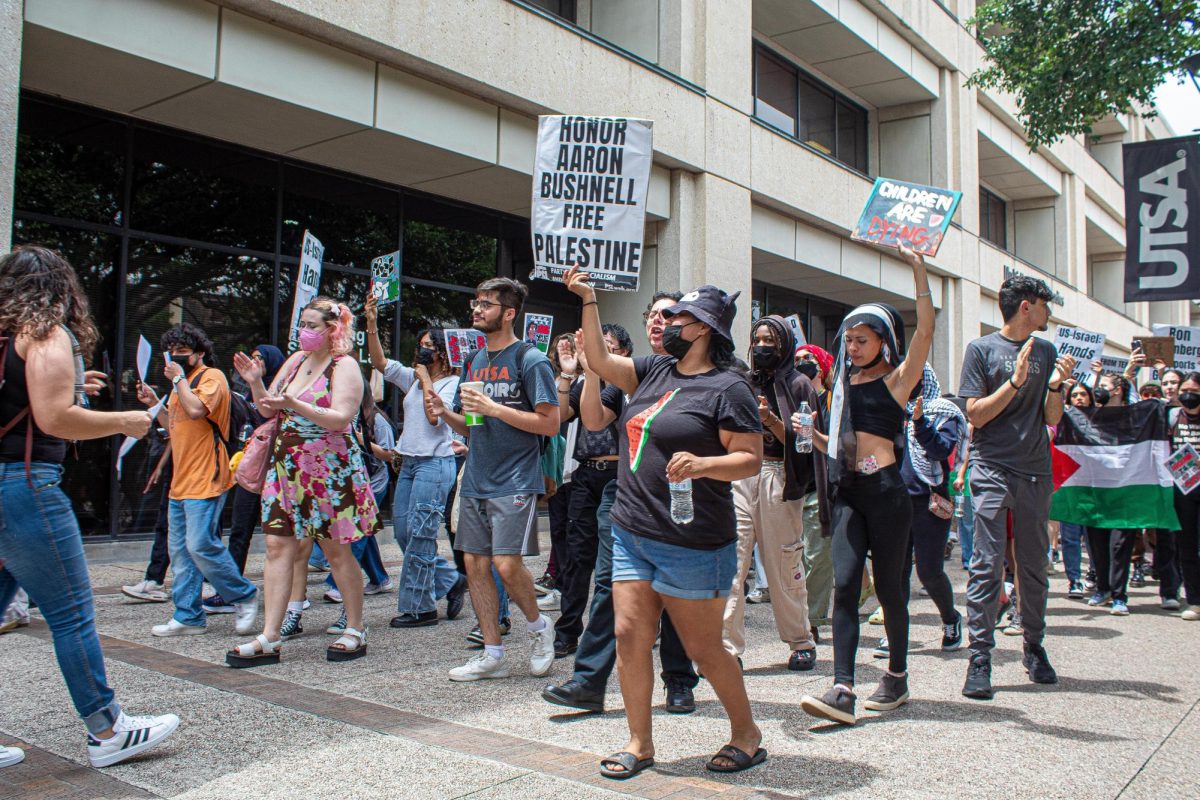UTHSCSA biochemist, Dr. Reto Asmis, Professor of Clinical Laboratory Sciences and Biochemistry and his team identified a new piece of the continual working puzzle (cycle) of atherosclerosis, a secret disease that shows no signs or symptoms for decades.
“This is not an old people’s disease; this is something that starts in youth, even in children,” said Dr. Thomas Forsthuber, professor of immunology, “We are seeing Type 2 Diabetes in children, which has never been the case.”
Atherosclerosis is a silent epidemic, especially in San Antonio where fast food and a high fat diet are a part of many students’ daily lives. Years of unhealthy eating, such as hamburgers and tacos, builds plaque that may lead to atherosclerosis, hyperglycemia, high cholesterol and diabetes. According to the American Diabetes Association website, “Diabetes in San Antonio is currently double the seven percent national average.”
One would think white blood cells defend the body of infectious diseases and foreign substances. However, in the process of atherosclerosis; white blood cells such as monocytes can be more harmful than helpful.
Monocytes monitor the entire of body of infection and when they sense inflammation they respond rather quickly. According to the Merck Manuals Online Medical Library, “Genetic abnormalities that affect the function of monocytes and macrophages and cause buildup of debris within the cells result in the lipid storage diseases.”
“The macrophages deposit off the cholesterol and high lipids into the blood vessels, causing inflammation and thickening of blood vessel walls,” Forsthuber said.
On Sept. 15, in the Biotechnology, Sciences and Engineering building, Asmis said there could be a reversible process of atherosclerosis with further research. “Babies are born with early atherosclerotic lesions, but these lesions usually completely disappear during infancy,” Asmis said.
Asmis’ research states, Phytonutrients such as sage, rosemary, oregano, apples, cranberries, blueberries and thyme contain ursolic acid, an Atheroprotective compound that could slow down the process.
Asmis said that a High Fat Diet (HFD) with high cholesterol heightens the sense of alertness of the monocytes speeding the process of atherosclerosis. More cholesterol and high lipids is like adding more wood to a fire. “If we can prove that this compound or its related analogues prevents monocyte dysfunction, we think you can prevent one big piece of what’s causing these cells to become way too responsive and proatherogenic.” Asmis said.
Phytonutrients as Atheroprotective Compounds- Novel Mechanisms and Targets was a Seminar in Translational Research (STRECH). RCMI and IIMS hold monthly seminars sponsored by National Center for Research Resources (NCRR) at the National Institutes of Health (NIH). The objective for the seminar series is for basic and clinical researchers from UTSA and UT Health Science Center to work in partnership as they develop ground-breaking theories, advances and technologies.
Asmis is an expert of his field, studying atherosclerosis and comparative diseases with 25 years of biochemistry experience. “I think he’s an outstanding scientist,” said Dr. Forsthuber. He has received more than $6.1 million in funding for his research and his academic knowledge extends from Switzerland, Germany, California, Kentucky and Texas.
Further research and innovative developments are a step closer to treating and preventing atherosclerosis. Students who choose healthier diets significantly reduce their chances of atherosclerosis.
Fact Box: Atherosclerosis is a condition in which an artery wall thickens as the result of a build-up of fatty materials such as cholesterol.











